- News
- Reviews
- Bikes
- Components
- Bar tape & grips
- Bottom brackets
- Brake & gear cables
- Brake & STI levers
- Brake pads & spares
- Brakes
- Cassettes & freewheels
- Chains
- Chainsets & chainrings
- Derailleurs - front
- Derailleurs - rear
- Forks
- Gear levers & shifters
- Groupsets
- Handlebars & extensions
- Headsets
- Hubs
- Inner tubes
- Pedals
- Quick releases & skewers
- Saddles
- Seatposts
- Stems
- Wheels
- Tyres
- Tubeless valves
- Accessories
- Accessories - misc
- Computer mounts
- Bags
- Bar ends
- Bike bags & cases
- Bottle cages
- Bottles
- Cameras
- Car racks
- Child seats
- Computers
- Glasses
- GPS units
- Helmets
- Lights - front
- Lights - rear
- Lights - sets
- Locks
- Mirrors
- Mudguards
- Racks
- Pumps & CO2 inflators
- Puncture kits
- Reflectives
- Smart watches
- Stands and racks
- Trailers
- Clothing
- Health, fitness and nutrition
- Tools and workshop
- Miscellaneous
- Buyers Guides
- Features
- Forum
- Recommends
- Podcast
review
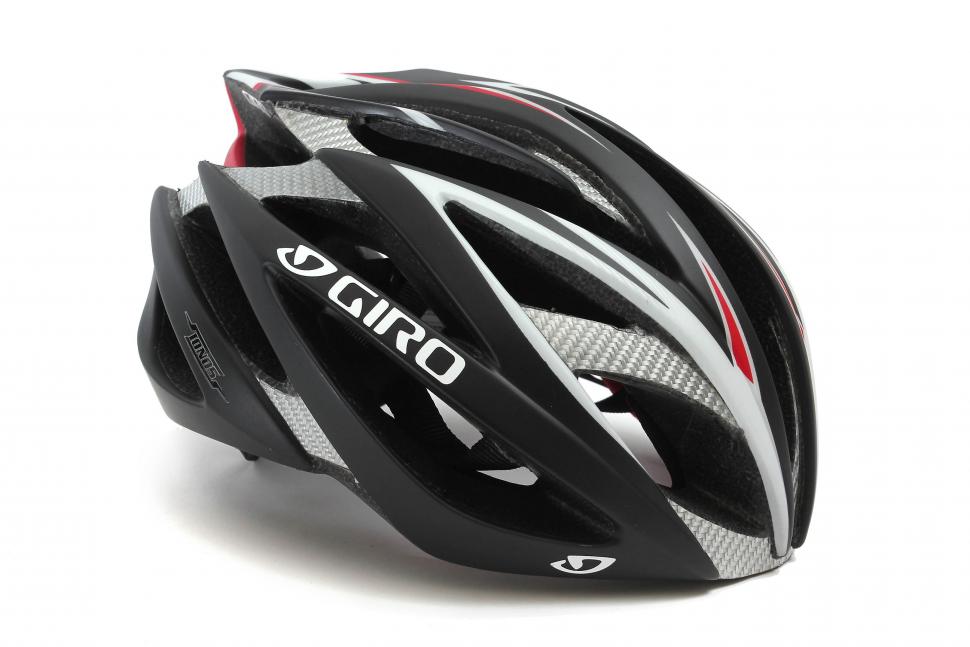 Giro Ionos RL5
Giro Ionos RL5£169.99
VERDICT:
High-quality performance helmet with superb ventilation – but it comes with a whopping price tag
Weight:
304g
Contact:
www.madison.co.uk
At road.cc every product is thoroughly tested for as long as it takes to get a proper insight into how well it works. Our reviewers are experienced cyclists that we trust to be objective. While we strive to ensure that opinions expressed are backed up by facts, reviews are by their nature an informed opinion, not a definitive verdict. We don't intentionally try to break anything (except locks) but we do try to look for weak points in any design. The overall score is not just an average of the other scores: it reflects both a product's function and value – with value determined by how a product compares with items of similar spec, quality, and price.
What the road.cc scores meanGood scores are more common than bad, because fortunately good products are more common than bad.
- Exceptional
- Excellent
- Very Good
- Good
- Quite good
- Average
- Not so good
- Poor
- Bad
- Appalling
The top-of-the-range Ionos gets Giro’s new Roc Loc 5 fit system for 2011 which, unlike previous incarnations, comes with a ratcheting, micro-adjustable dial to make on-the-fly fine-tuning easier.
With Roc Loc 4 you had two little buttons around the back that you either pushed closer together or pulled further apart when you want to alter the fit. You could tighten it one-handed simply enough, but loosening it was really a two-handed job.
The Roc Loc 5 system’s dial is small – about 18mm in diameter – but it’s easy to adjust in either direction, even with gloved fingers, and a healthy click lets you know you’re turning it.
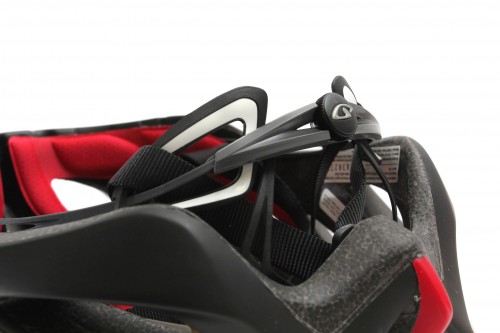
The vertical fit – the amount the harness extends down the back of your head – is also improved. Whereas previously you had to take the helmet off to alter this, with Roc Loc 5 you can do it while it’s on your head. It’s a small point – you’ll probably never change this setting once you have it right – but it makes life slightly easier to begin with. You get three different vertical fit positions with a total range of 15mm. The other change with Roc Loc 5 is that the helmet straps thread through the arms of the fit system, holding them just that little bit more securely next to your head.
We wouldn’t say that the Roc Loc 5 offers an improved feel over Roc Loc 4 – we found it perfectly comfortable and snug fitting before. But it is certainly much easier to tweak, lighter (by 40%), and, according to Giro, stronger.
Speaking of weight, hitting the scales at 304g (medium), the Ionos isn’t the lightest helmet out there by a long way. The super-light Giro Prolight (medium, £149.99), for example, comes in at just 174g and there are plenty of helmets in the 200-250g range. But where the Ionos really scores is in terms of comfort.
You get excellent airflow here thanks to a whole load of vents (21, if we’re counting, although the figure isn’t really the point) including some large ports over the front and top sections. The internal channels are excellent, taking the air through so you don’t overheat even when you’re riding hard on a hot day. Your head really does stay noticeably cooler than in most other helmets – we’d say it’s the coolest lid we’ve ever used. The flip side is that you get a colder head in chilly temperatures, so you might find yourself digging out a skullcap a little more often than usual if you use this helmet.

Giro are able to build the Ionos with such large vents because of what they call the in-mold composite sub-frame. That’s a posh way of saying that it has carbon fibre reinforcement running through it – you can see the silver-weave around some of the vents. This allows them to remove material and still retain the safety characteristics you need. Of course, the Ionos meets CE EN1078, the European safety standard.
Finally, the Ionos comes with X-Static helmet padding that includes anti-microbial silver fibres. The idea is that it inhibits the growth of micro-organisms and so reduces odours. It’s also said to have thermodynamic benefits, keeping you cooler in summer and warmer in winter. Does it work? Pfft! We don’t know, to be honest. If it does, it’s too subtle for us to notice. What we do know is that the pads are comfy enough and they’re easy to take out and wash when you need to, and that’s all we really care about on that front.
We’d always advise you to try a helmet on before you buy – or at least one from the same manufacturer. It’s got to sit right if it’s going to protect your swede. That said, most of the people we got to try the Ionos were happy with the fit. It comes in three different sizes and the retention system offers enough adjustment for a wide range of head sizes.
Who should buy the Ionos? Well, if you’re after pure value for money, this clearly isn’t the choice for you. You don’t need us to point out that £169.99 (£159.99 with Roc Loc 4) is a helluva lot of cash to spend on a road helmet when you can get a similar level of protection for a fraction of the price. No, the main reason you’d buy the Ionos is for the high standard of venting and you’re going to benefit most from that if you’re a performance rider – a racer, sportive rider, or just someone who likes to go out and cycle hard. If staying cool is vital and you don’t mind paying big bucks, it’s an excellent choice.
Several other helmets in the Giro range will have the Roc Loc 5 system for 2011: on the road it’s the Atmos (£129.99), Saros (£89.99) and Monza (£74.99). The Advantage time trial helmet (£139.99, size large only) gets it too, as do the Athlon (£99.99) and Hex (£74.99) mountain bike helmets, along with the new all-mountain Xar (£114.99).
Verdict
High-quality performance helmet with superb ventilation – but it comes with a whopping price tag
road.cc test report
Make and model: Giro Ionos
Size tested: Matte black/red
Rate the product for quality of construction:
9/10
Rate the product for performance:
9/10
Rate the product for durability:
8/10
Rate the product for weight, if applicable:
7/10
Rate the product for comfort, if applicable:
9/10
Rate the product for value:
5/10
Did you enjoy using the product? Yes
Would you consider buying the product? Possibly, although I like the Prolight too
Would you recommend the product to a friend? Yes
About the tester
Age: 39 Height: 190cm Weight: 74kg
I usually ride: My best bike is:
I've been riding for: Over 20 years I ride: Most days I would class myself as: Expert
I regularly do the following types of riding: time trialling, commuting, sportives, general fitness riding,
Mat has been in cycling media since 1996, on titles including BikeRadar, Total Bike, Total Mountain Bike, What Mountain Bike and Mountain Biking UK, and he has been editor of 220 Triathlon and Cycling Plus. Mat has been road.cc technical editor for over a decade, testing bikes, fettling the latest kit, and trying out the most up-to-the-minute clothing. He has won his category in Ironman UK 70.3 and finished on the podium in both marathons he has run. Mat is a Cambridge graduate who did a post-grad in magazine journalism, and he is a winner of the Cycling Media Award for Specialist Online Writer. Now over 50, he's riding road and gravel bikes most days for fun and fitness rather than training for competitions.
Latest Comments
- eburtthebike 5 hours 2 min ago
The deterrent effect is almost certainly due to the massively increased likelihood of the offence being detected. As with other crimes, if the...
- Martin1857 5 hours 30 min ago
As a member of the Co-op community (I live in a Housing Co-op) and a bike owner /rider, this is very sad news. We need more Co-ops not less.
- AnotherChrisOnAnotherTrike 5 hours 30 min ago
My EV exceeds the size. It's the smallest vehicle available which can transport my wife's trike (excursions or rescue).
- Dnnnnnn 5 hours 21 min ago
It is sad for the individuals concerned but (and this is a general point, rather than specific to this story), we're much better off overall for...
- No Reply 6 hours 11 min ago
I agree with Pogacar regarding social media. The likes of Facebook, Instagram have done untold damage, especially to the minds of young people....
- David9694 6 hours 16 min ago
Lorry carrying 25 tonnes of beer catches fire on the M11...
- No Reply 6 hours 21 min ago
If you're a cyclist on a road you are public enemy number 1.
- Rendel Harris 6 hours 50 min ago
He advocates only riding mountainbikes solely offroad for ultimate safety, which is great if you're a millionaire of leisure living in Colorado...
- ktache 7 hours 21 min ago
That looks like a fun bike. Frame only, 2 and an 1/2 grand.
- wtjs 8 hours 17 min ago
Fair enough, personal experience may trump (not that one) theory. However, the bonking I have experienced has been due to lack of carbs. Your point...

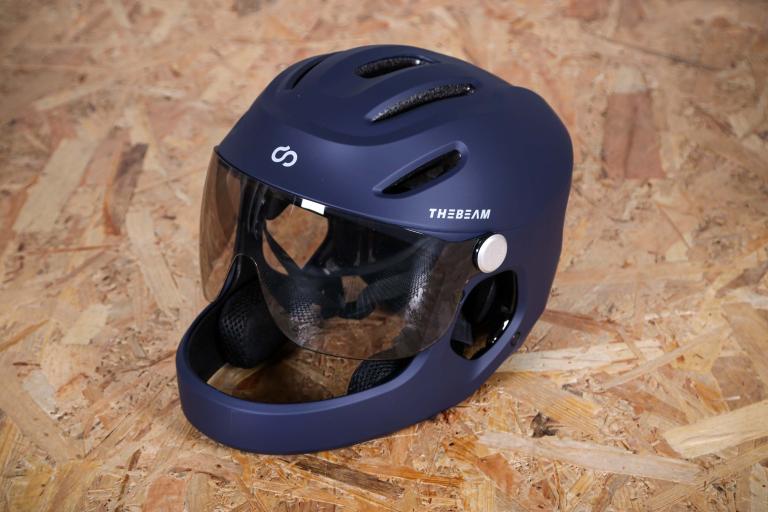
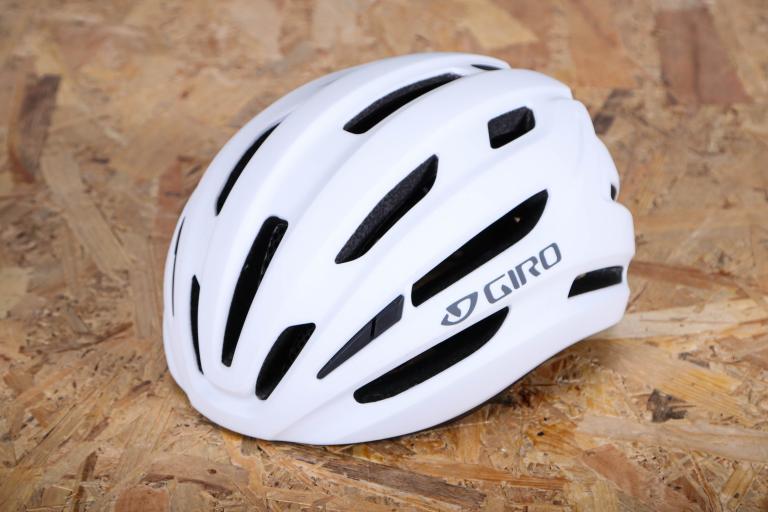
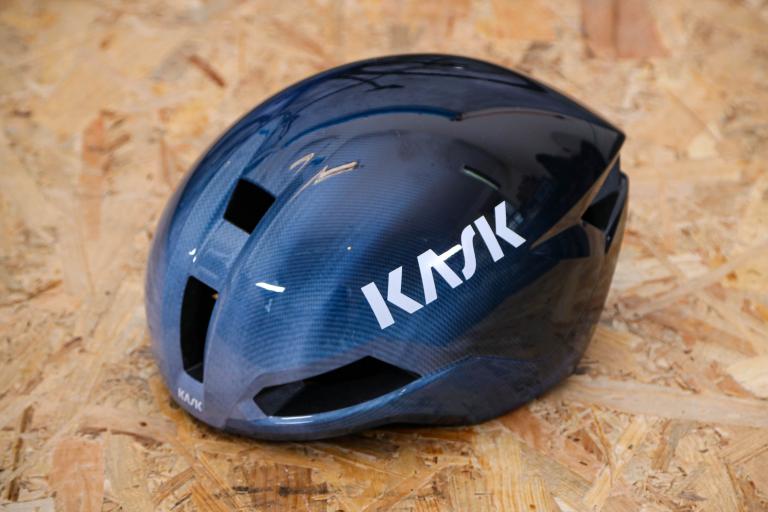
Add new comment
5 comments
Competitive Cyclist recently had a 50% off sale on Ionos lids, but the sale only lasted 24hrs. Managed to bag one for $119 USD


Its in the post and I eeees very happy.
I think that it is rather telling that a visual "poll" of this years Tour riders sponsored by Giro it appeared (IMHO) that the majority wore the Ionos rather than Prolight. Contador (and possibly Menchov) being the only one that I can think of. Noticeably LA and a lot of others seemed to be wearing Ionos. Personally a cool helmet is more important than a very light helmet.
Cheers Mat. Yep essentially the Prolight and the Ionos are completely different helmets, weight being the empahsis on the Prolight design brief (172g - medium) whilst ventilation was the number one priority for the Ionos. To help account for the weight difference between to two - the larger the vents (Ionos) then the meatier the supporting framework has to be (in order for it to pass the same safety standards, etc). It might also be worth noting that all production Ionos helmets come with a winter kit included (they're that well vented), the pre-production item Mat tested unfortuantley didn't come through with one.
http://www.giro.com/en-us/products/accessories/ionos-accessories/
Better? It depends what you're after. The Prolight is lighter, the Ionos has better ventilation, so it depends on your priority. It's not a massive difference in ventilation – but you will notice it. You'll notice it more, mind, if you ride a big Pyrenean climb in July rather than typical UK conditions.
A weight difference of 130g is tiny. It's not going to make you go any faster or slower. It's just that you might find a lighter lid a bit more comfortable. Personally, I do.
The other thing to think about is the fit system - with the Ionos you can fine-tune it lots, with the Prolight you pretty much get what you're given. We don't know anyone who has had any trouble with the Prolight's fit but the only way to check for sure is to stick one on.
Happy hunting.
Is this a 'better' helmet than the 'Prolight'? They both meet the same safety standard yet the Ionos is extraordinarily heavy (in 'weight-weenie' cycling terms) and more expensive when compared to the Prolight. Who'd buy the Ionos, and why? Can the venting pattern really make it SO much cooler? I'm genuinely puzzled